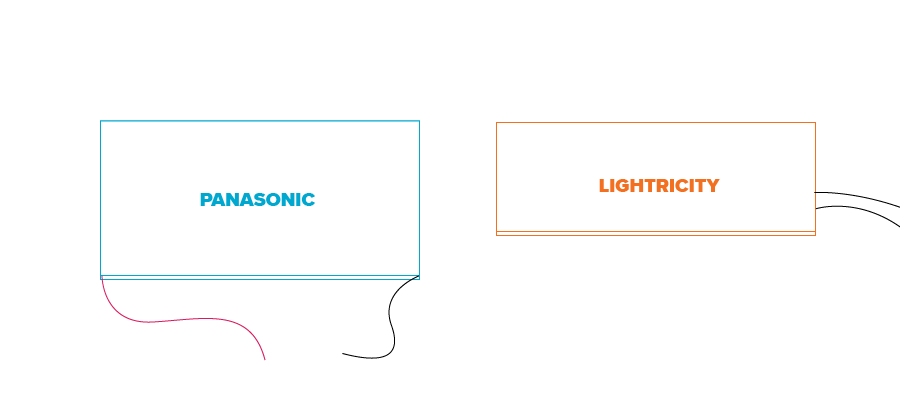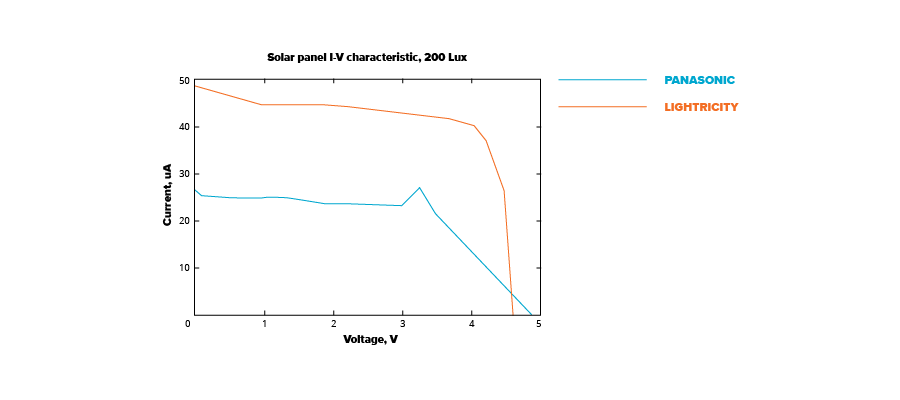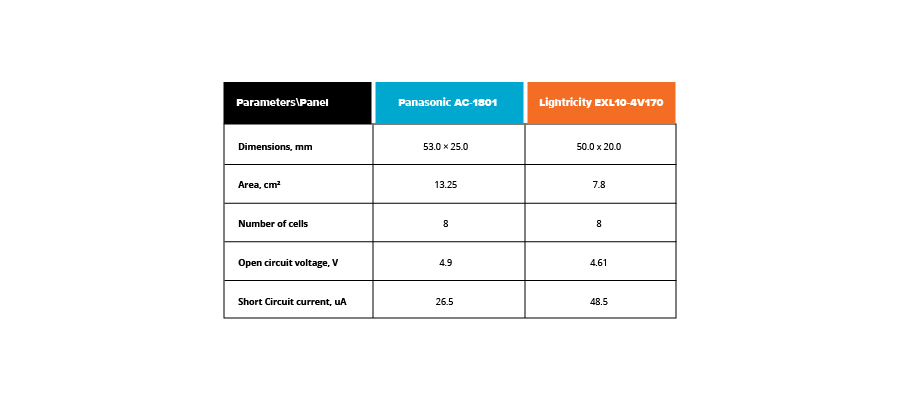People spend the majority of their time inside. They surround themselves with lots of devices to make life more comfortable, including environment sensing, assets management, access control, and more. Of course, these devices must be powered from batteries or wired sources.
Are there alternatives to reduce the maintenance costs for powering this infrastructure? While indoor environment is commonly lighted, can indoor solar panels be used to replace the batteries and power devices?
Recently, SoftServe partnered with Lightricity, a company that has developed an industry-leading photovoltaic energy harvester for indoor light environments. The photovoltaic module EXL10-4V170 is an example of their energy harvester product.
The R&D team decided to evaluate their performance and compare it with similar solutions on the market. This information will be essential while building future power harvesting demos. Typically, a solar panel has many cells connected in series or parallel to increase the power output by increasing voltage (series connection), current (parallel connection), or both. The power output of the solar panel is typically proportional to its actual dimensions.
The majority of the advanced hardware platforms use the maximum power point tracking (PWM) technique to improve the power transfer from a solar panel to the battery by controlling the output voltage and variating the impedance that matches the panel.
During the investigation of the indoor panels application, the SoftServe R&D team tested several panels provided by Lightricity EXL10-4V170 and Panasonic AC-1801.

To run the test, the black box and LED lamp with a controlled intensity were used. As typical indoor lighting has a range of 50-300lux, depending on the distance from the light source, the team used a light intensity of 200lux. The results will vary depending on the light source type, as LED and luminescent lamps have different spectral characteristics.
The obtained data is depicted on the chart below for both panels.


The testing demonstrated that the Lightricity module is capable of providing more power than competitors in the same lighting conditions but with a smaller area. In this test, the maximum power output of Lightricity panel EXL10-4V170 was 162uW, which is close to the datasheet value (170uW).

